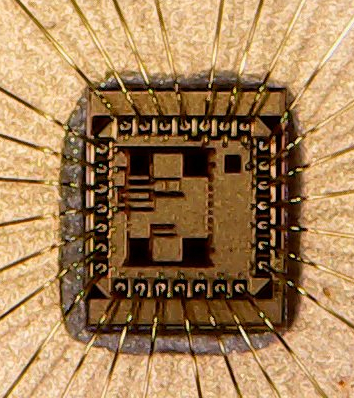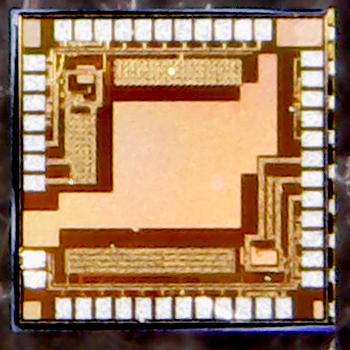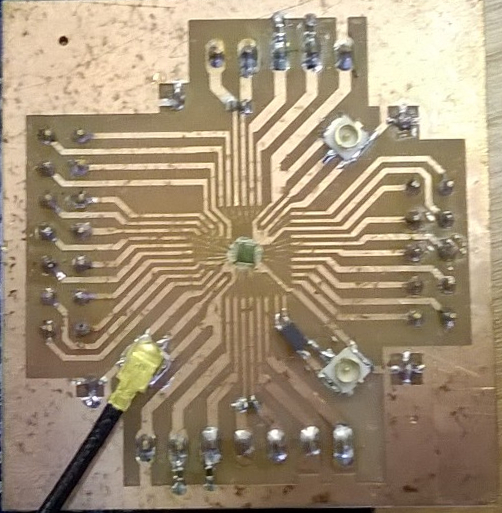Chips projetados no LRF
Analog to digital interface circuit for a relative humidity SAW sensor
 |
Analog to digital interface circuit for a relative humidity SAW sensor |
1-GHz CMOS Differential Ring Oscillator (research project – 2017)
HBC Transceiver (student project 2016/2017)
|
Photo of the HBC Transceiver
(packaged chip assembled in a PCB)
(photo of the die)
|
High Frequency LC parameter extractor (student project 2016/2017)
 |
Photo of the LC parameter extractor
assembled on a PCB (wirebonding)
|
Double Feedback Oscillator (student project 2015/2016)
 |
Double Feedback Oscillator.
|
Class-E Power Amplifier (student project 2016)
 |
Class-E Power Amplifier.
|
25-dBm 1-GHz Class-D Power Amplifier (student project 2015)
 |
25-dBm 1-GHz Power Amplifier.
|
Fully-integrated Tag with Digital Memory (student project 2016)
 |
Fully-integrated Tag with Digital Memory.
|
CMOS fully-integrated receiver for medical implants (student project 2015)
 |
A CMOS fully-integrated receiver for autonomous implanted devices.
|
Automatic test and correction of LC resonator (student project 2015)
 |
The correction of the LC resonance frequency is done with an ultra-fast a simple circuit based on high dynamic range negative-resistance circuit.
|
Conditioning circuit for ISFET-based sensor (research project 2014)
400 MHz Superregenerative receiver (research project 2014)
 |
400 MHz superregenerative receiver for WBAN applications.
|
2.4 GHz CMOS Hartley oscillator (student project 2013)
 |
Ultra-low power CMOS oscillator based on the Hartley topology. This project was developed by graduate students as an assignment of the Radio Frquency Electronics course
|
900 MHz UHF Energy harvester (research project 2012)
 |
This 900 MHz UHF Energy harvester is going to be used for powering a WBAN temperature sensor.
|
 |
A Duty-Cycle Controlled Variable-Gain Amplifier for WBAN applications (student project 2012)
Low Voltage LNA (student project 2012)
Low Power LNA (student project 2012)
A 2.4GHz Cascode CMOS Low Noise Amplifier (student project 2012)
2.4 GHz Ultra Low-Voltage Oscillator (research project 2012)
Low-voltage Super-regenerative receiver at 2.4GHz ( 2012).



















